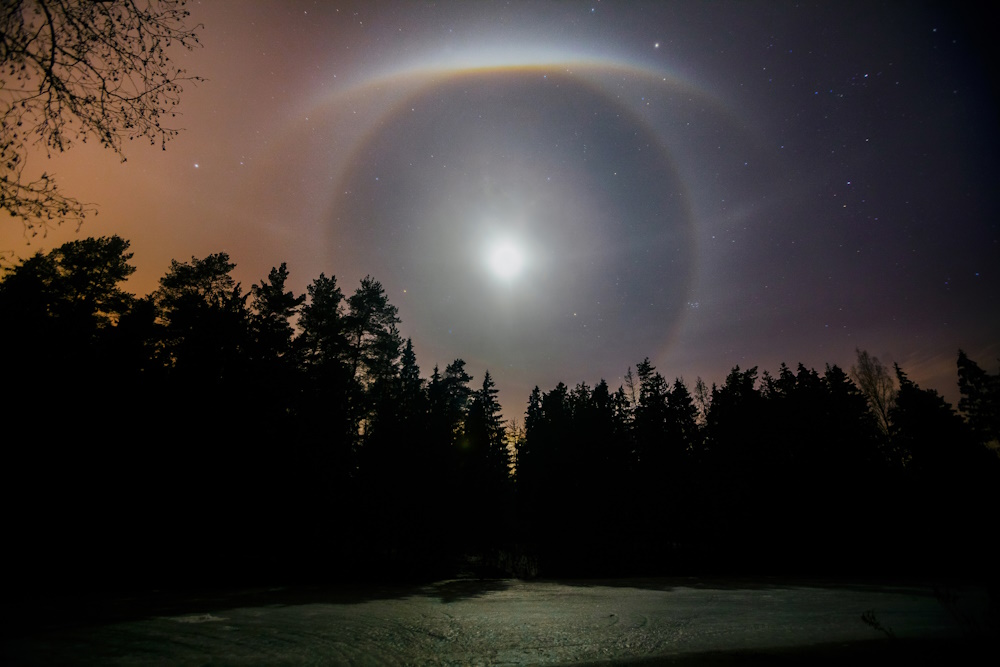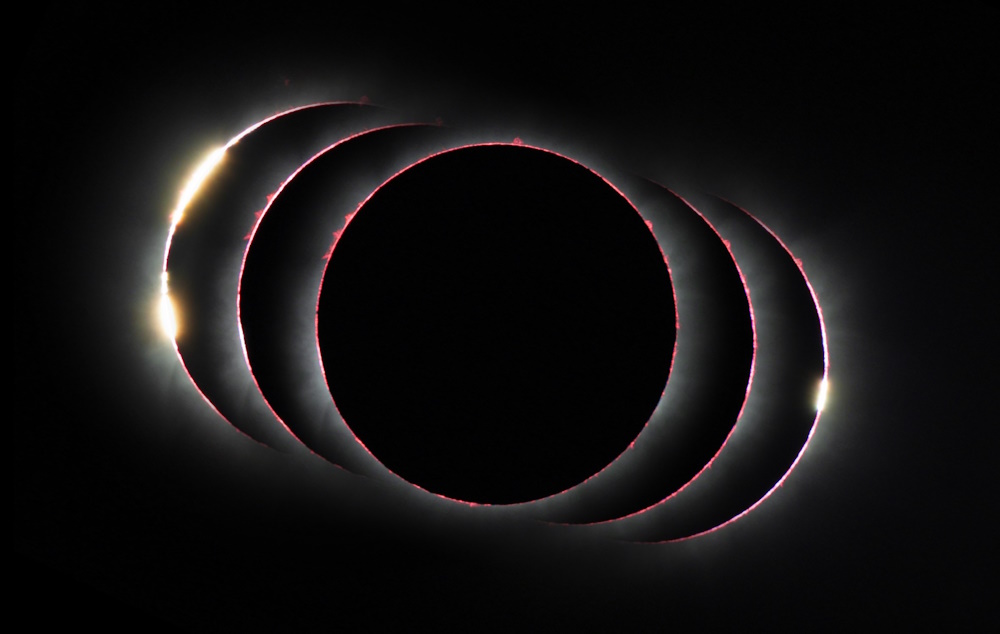Astronomy 2017
Shortlisted entries in the Astronomy category from the 2017 Royal Society Publishing Photography Competition.
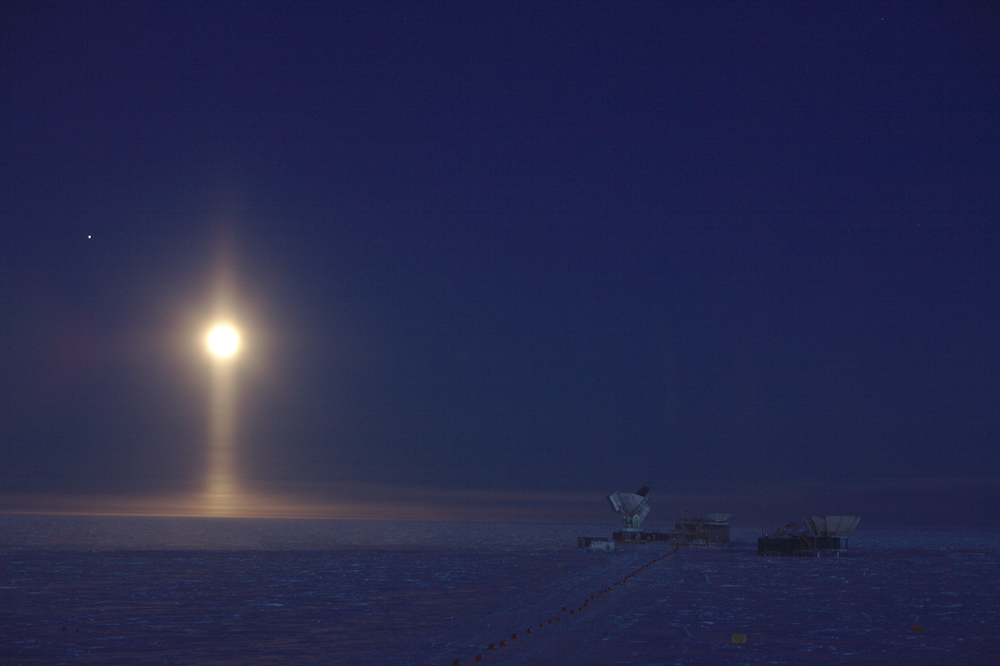
Category Winner "Lunar spotlight, South Pole, Antarctica." by Daniel Michalik. Ice crystals suspended in the atmosphere create a rare optical phenomenon: a light pillar underneath the Moon. The cold dry atmosphere at the Geographic South Pole favours this and similar phenomena (sun/moon dogs, halos, arcs); they are much more often seen here than in the non-polar regions. The light pillar creates a dramatic spotlight on the out-of-this-world appearance of the frozen Antarctic plateau. Three of the telescopes located at the south pole are visible to the right of the picture. A flag line helps finding the way to the telescopes during the five months of continuous darkness. Jupiter is visible as a bright spot left of the Moon. The photographer is currently wintering at the South Pole and working for the 10m South Pole Telescope, the left-most radio dish visible in the picture. The picture was taken as one single long exposure in -60°C with minor contrast and exposure adjustments.
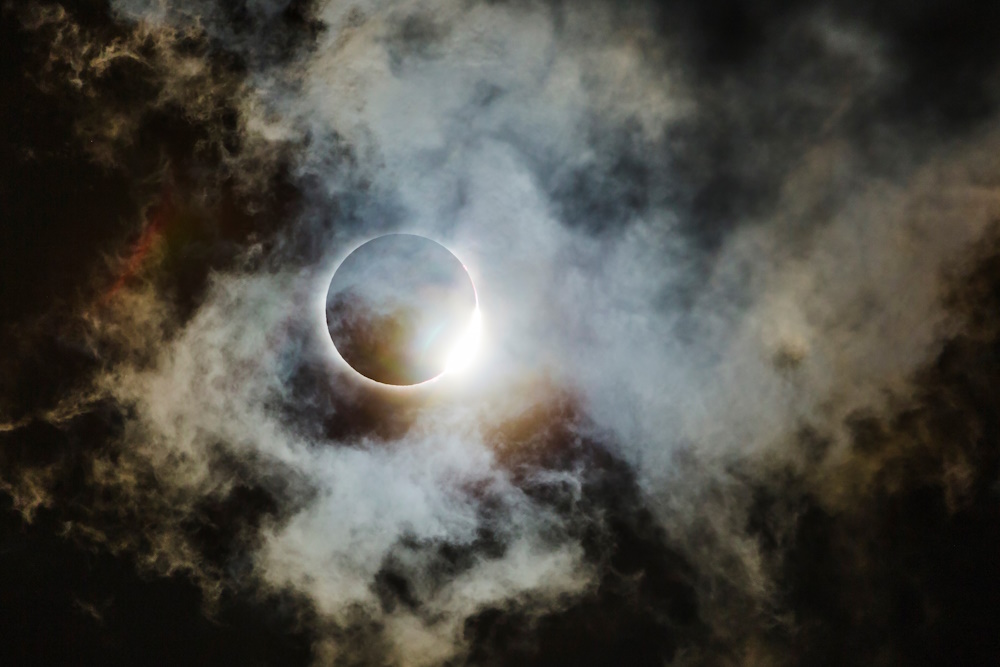
Runner up "Diamond ring through thin clouds." by Wei-Feng Xue. The American Eclipse of 2017 seen from the part of the path of totality that went through northern Georgia. This is the diamond ring lighting up some very thin cloud structures, looking almost like space clouds (i.e. a nebula). Also in the photo, the solar corona was dimmed a little by the thin clouds but was still visible, and some Baily's beads and solar prominences that can be seen around the diamond. This photo was taken using a Canon EOS 6D digital SLR camera with a Canon EF 70-200mm + 2x extender at 400mm, and was processed using Photoshop CC.
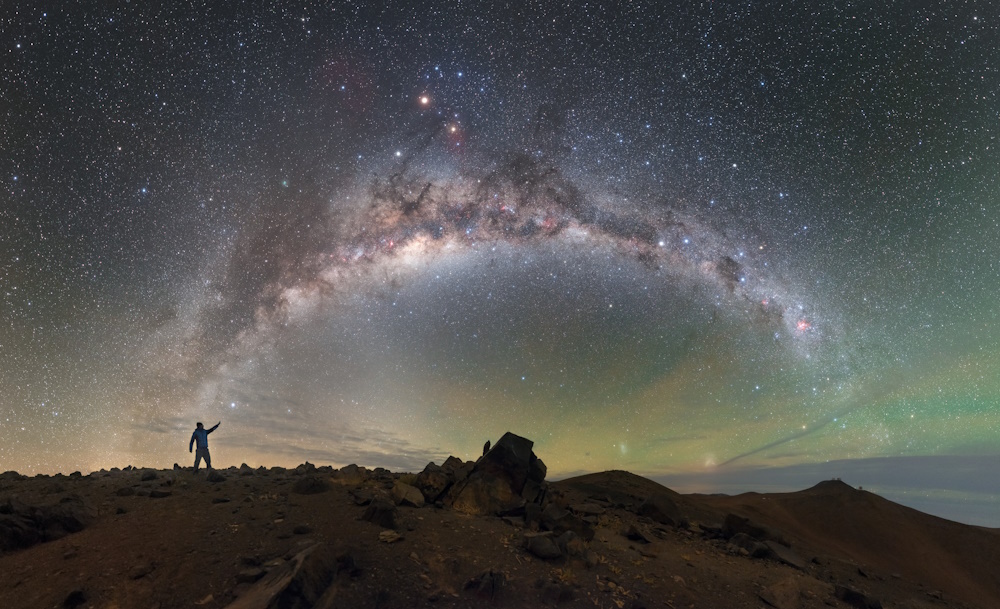
Honourable mention "Within reach." by Petr Horálek. The skies above ESO's Paranal Observatory resemble oil on water as greens, yellows and blues blend to create an iridescent skyscape. The rocky, barren landscape below evokes an alien world, complementing the cosmic display above. The main feature: our beautiful home galaxy, the Milky Way, arching across the Chilean night sky and framing the observer on the left. The light from billions of stars combine to create the Milky Way's glow, with huge clouds of dark dust blocking the light and creating the observed mottled pattern. A natural effect, airglow, is responsible for the swathes of green and orange light that appear to be emanating from the horizon. ESO's Very Large Telescope can be seen as a speck in the background to the right. Its neighbour, slightly lower down, is the Visible and Infrared Survey Telescope for Astronomy.
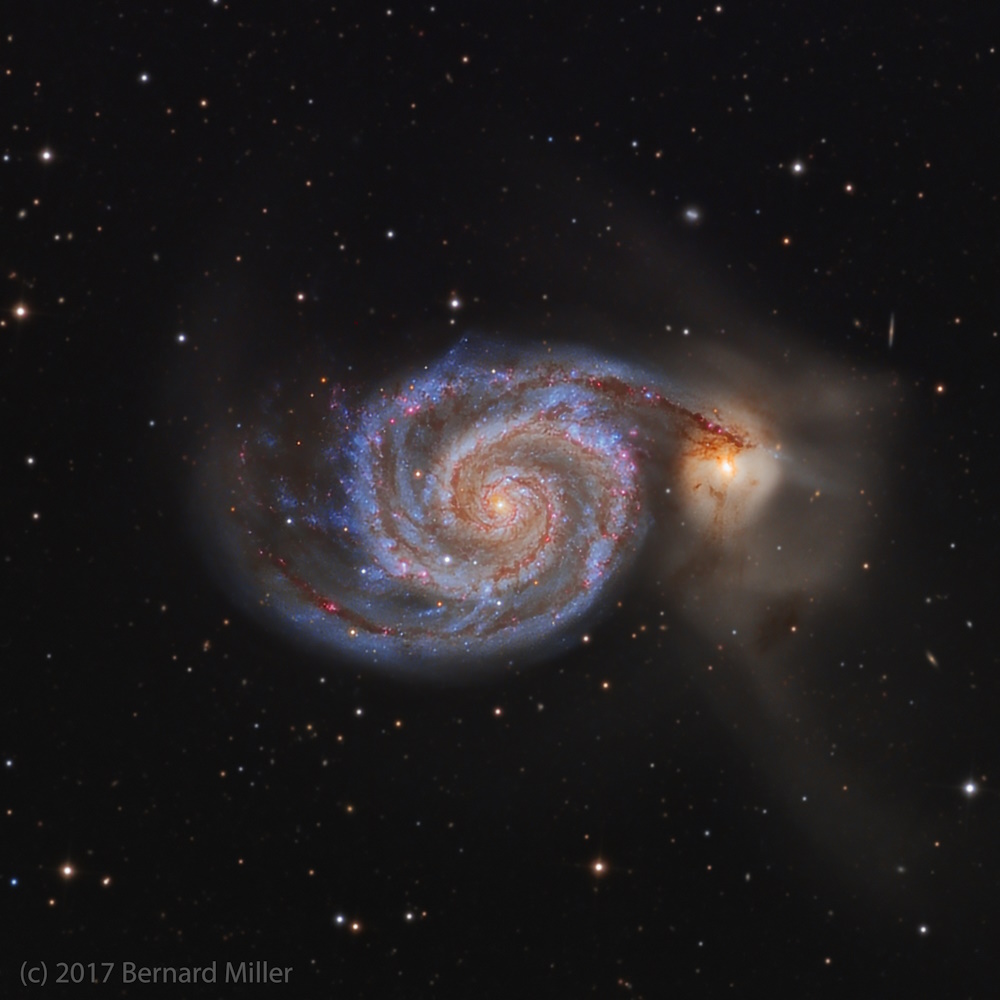
Shortlisted "Interacting galaxies NGC 5194 and NGC 5195." by Bernard Miller. This is a picture of two interacting galaxies, NGC 5194 and NGC 5195, also know as M51. It is about 23 million light years away in the constellation Canes Venatici. These two galaxies are in the process of merging, a process that will unfold over the next hundred million years or so. This picture is a combination of over 18 hours of exposure taken with a CDK-17 telescope and Apogee CG16M camera over a span of two weeks in April and May of 2017.
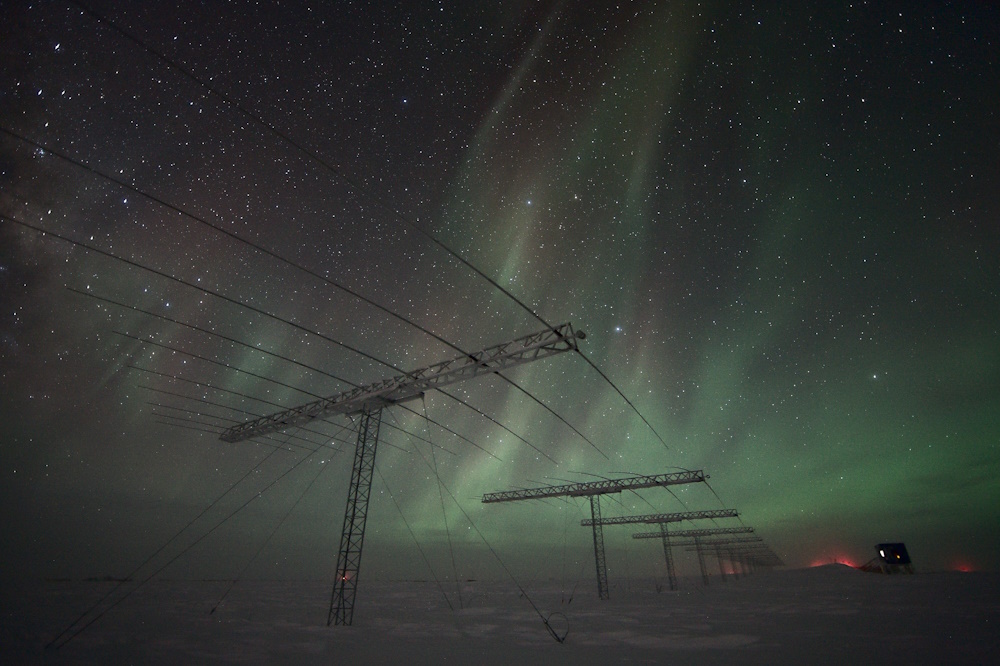
Shortlisted "South Pole Auroral Radar radaring auroras." by Daniel Michalik. Polar lights (aurora borealis/australis) form when charged particles emitted from the sun hit the earth's magnetic field and collide with atoms and molecules in our atmosphere. A world-wide network of antennae measures geomagnetic effects in the ionosphere (the Super Dual Auroral Radar Network; SuperDARN). The picture depicts the SuperDARN antennae at the Geographic South Pole (Antarctica) in front of the very phenomena they help research: aurora australis. The photographer is currently wintering at the South Pole. Taking the picture required a short hike from the Amundsen-Scott research station to the antenna array in -60°C. Keeping the camera and myself from freezing was a challenge met with six layers of clothes, plenty of spare batteries, and a hot water bottle. The title is a play on the name of the array and its purpose. The picture was taken as one single long exposure with minor contrast and exposure adjustments.
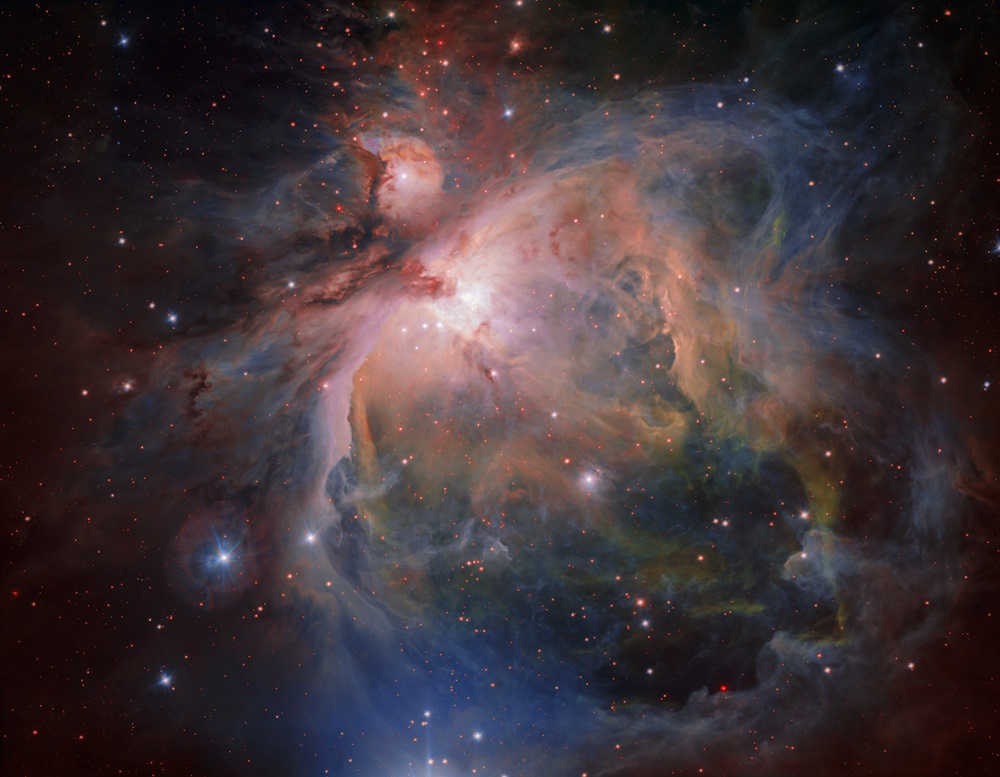
Shortlisted "The Orion Nebula and cluster from the VLT Survey Telescope." by Giacomo Beccari. OmegaCAM - the wide-field optical camera on ESO's VLT Survey Telescope (VST) - has captured the spectacular Orion Nebula and its associated cluster of young stars in great detail, producing this beautiful new image. This famous object, the birthplace of many massive stars, is one of the closest stellar nurseries, at a distance of about 1350 light-years.

Shortlisted "Cosmic fireworks over Paranal." by Petr Horálek. In this panorama, the night sky above ESO's Very Large Telescope (VLT) displays our cosmic neighbourhood in all its glory. On the right, behind the line of four 8.2-metre Unit Telescopes that together make up the VLT, the faint red and green hues of airglow, an emission of light by Earth's atmosphere, can be seen illuminating the sky above the horizon. In addition, zodiacal light is visible here in the firmament. This diffuse light is caused by microscopic particles of light-scattering space dust in the plane of the Solar System. While these features are beautiful, the most striking element of this image is undeniably the arc of the Milky Way. The bright arch of our home galaxy is peppered with dark filaments of dust, which absorb and obscure the light from the stars behind them, and bright patches where new stars are forming.

